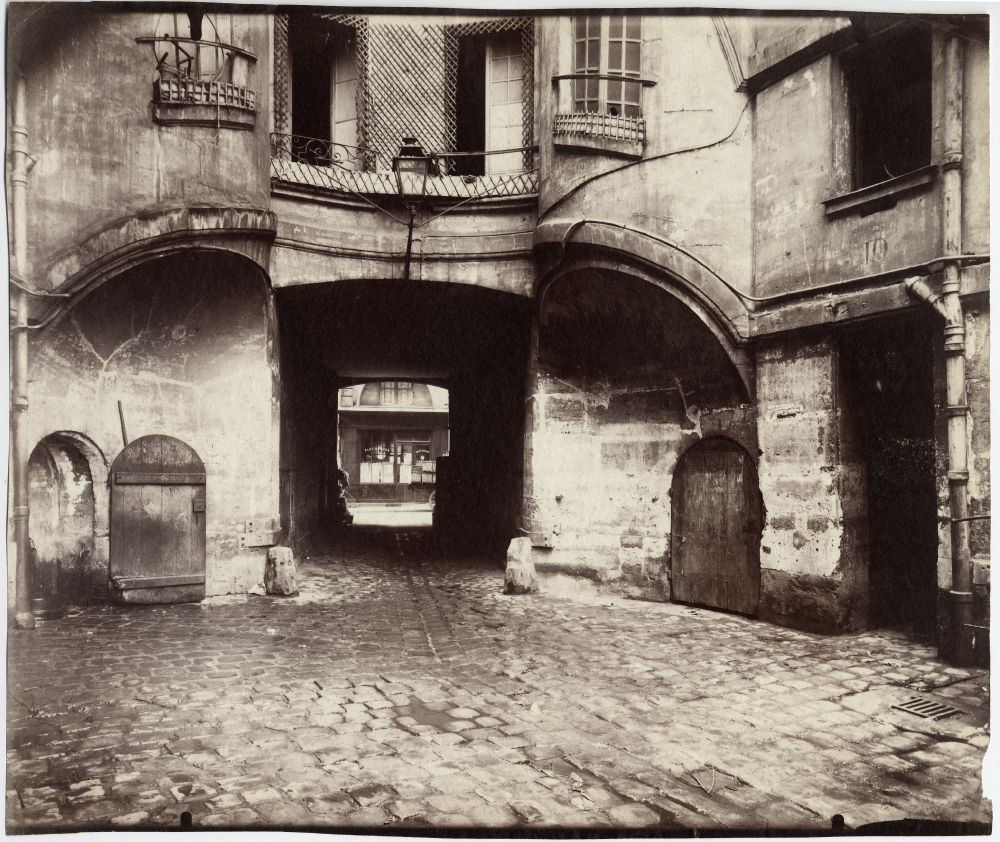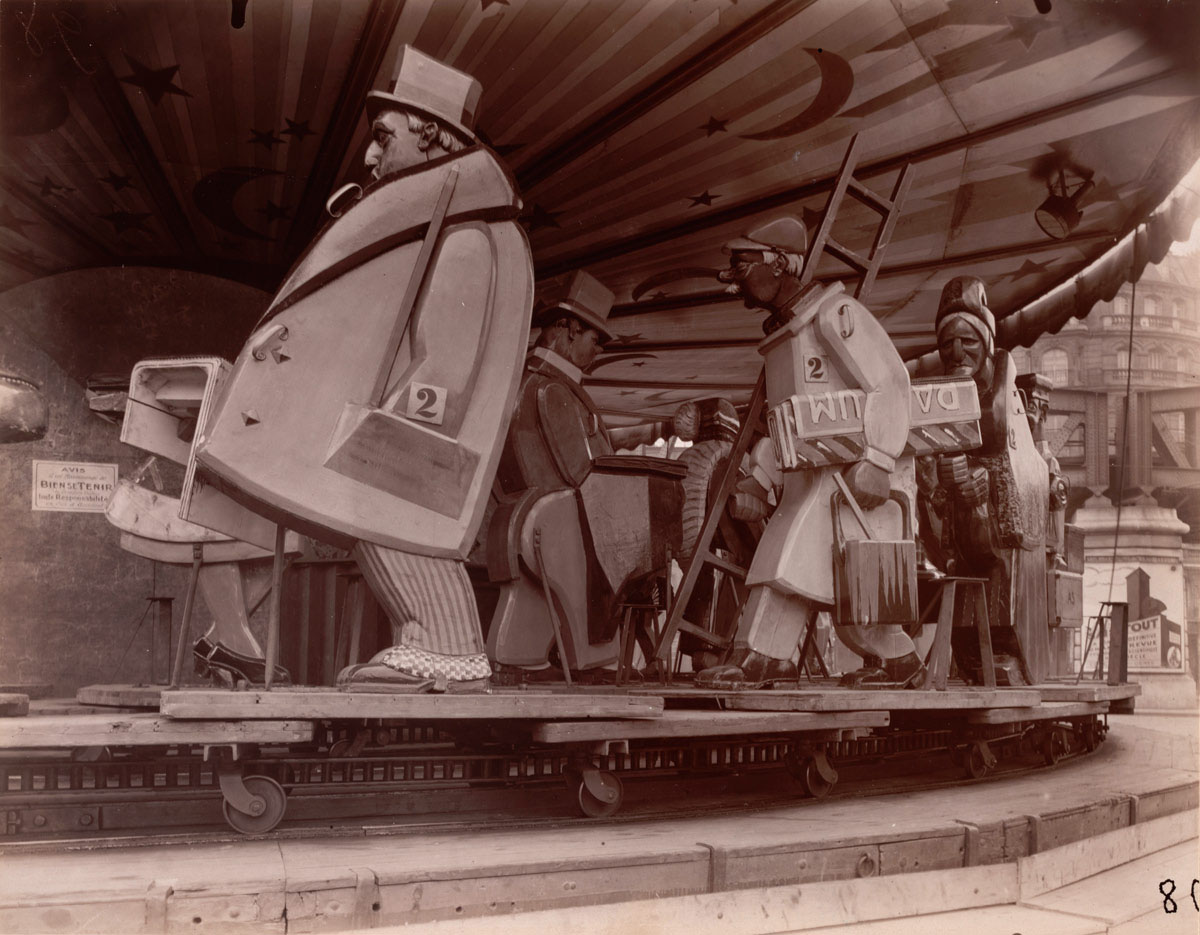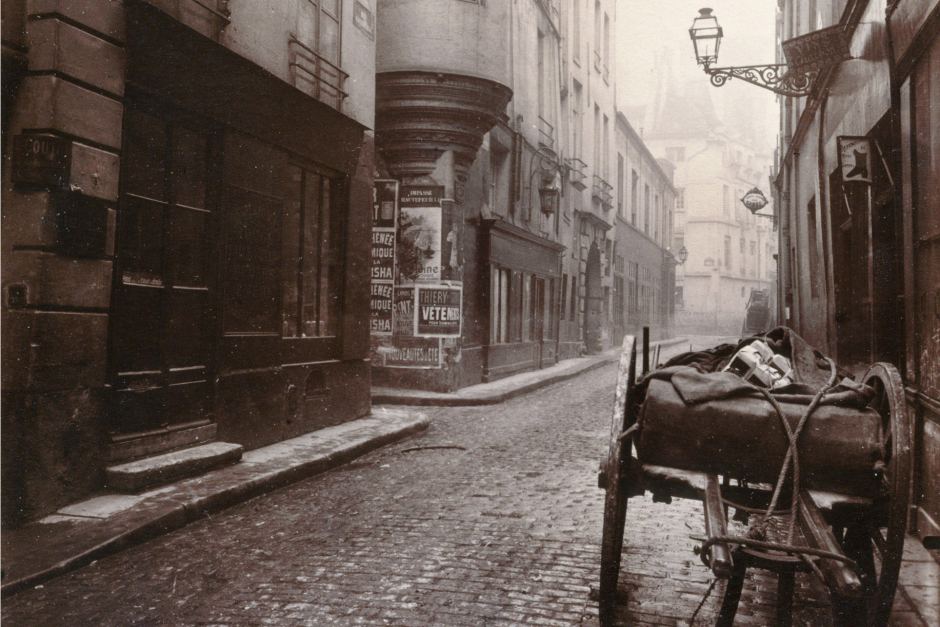
Empty is the Potre d'Arceuil by the fortifications, empty are the triumphal steps, empty are the courtyards, empty, as it should be, is the Place du Tertre. They are not lonely, merely without mood; the city in these pictures look cleared out, like a lodging that has not yet found a new tenant. It is in these achievements that Surrealist photography sets the scene for a salutary estrangement between man and his surroundings. It gives free play to the politically educated eye, under whose gaze all intimacies are sacrificed to the illumination of detail.

The squares in Paris are lucky accidents, as it were, in the urban landscape; they do not enjoy the patronage of history like the Place Vendôme or the Place de la Grève, are not the result of long planning, but instead resemble architectural improvisations --- those crowds of houses where the shabby buildings collide in a jumble. In these squares, the trees hold sway: there the smallest trees afford thick shade. At night, however, their leaves stand out against the gas-burning street lamps like transparent fruits. These tiny hidden squares are the future Gardens of the Hesperides.
--- Quotes from Benjamin's Passages
Alexander Gelley
©2015 Fordham University Press


Empty is the Potre d'Arceuil by the fortifications, empty are the triumphal steps, empty are the courtyards, empty, as it should be, is the Place du Tertre. They are not lonely, merely without mood; the city in these pictures look cleared out, like a lodging that has not yet found a new tenant. It is in these achievements that Surrealist photography sets the scene for a salutary estrangement between man and his surroundings. It gives free play to the politically educated eye, under whose gaze all intimacies are sacrificed to the illumination of detail.
The squares in Paris are lucky accidents, as it were, in the urban landscape; they do not enjoy the patronage of history like the Place Vendôme or the Place de la Grève, are not the result of long planning, but instead resemble architectural improvisations --- those crowds of houses where the shabby buildings collide in a jumble. In these squares, the trees hold sway: there the smallest trees afford thick shade. At night, however, their leaves stand out against the gas-burning street lamps like transparent fruits. These tiny hidden squares are the future Gardens of the Hesperides.
--- Quotes from Benjamin's Passages